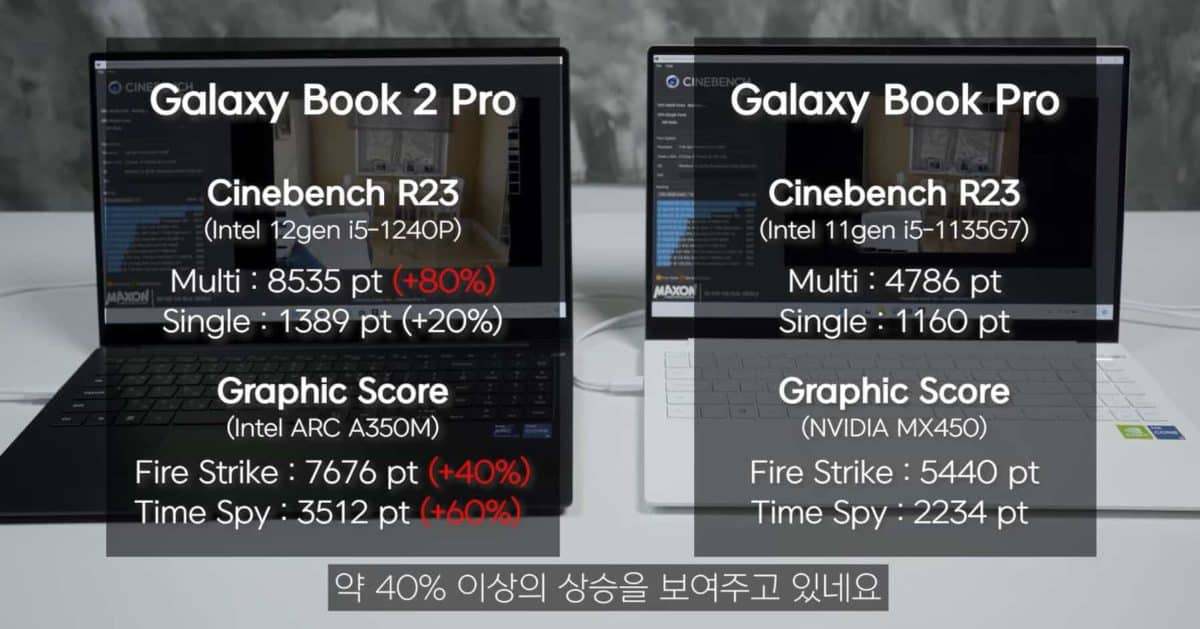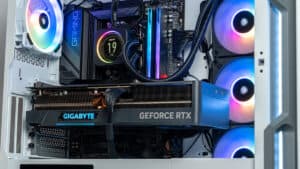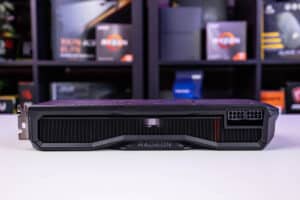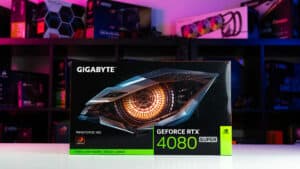Intel Arc A350M finally gets benchmarked
Intel's first GPU finally gets benchmarked

WePC is reader-supported. When you buy through links on our site, we may earn an affiliate commission. Prices subject to change. Learn more
The Intel Arc A350M and A370M have been highly anticipated for a while, as the first debut of the Intel Arc dedicated graphics cards after their announcement. However, after their grad reveal, Intel failed to actually manage to release the cards worldwide, so for now you can only actually obtain the A350M or A370M in a single laptop, in Korea. This has meant that it’s taken a while to see any actual real performance or any benchmark performance of the card in real-world scenarios.
Bear in mind that the A350 and A370 are not really hugely gaming-focused, and are intended to be a step up from integrated graphics rather than being simply meant for use for higher-end gaming. Though, you should still be able to run lighter titles on it. These chips are meant to go up against the likes of Nvidia’s MX450 and AMD’s integrated Rembrandt offerings.
Now that a user in Korea has managed to get their hands on a Samsung Galaxy Book Pro 2, one of the only available laptops that houses an A370M, it was put to the test against the older Samsung Galaxy Book, and if the results are to be believed, then we’ve got something to look forward to when it comes to future releases from Intel’s Arc lineup, whenever they decide to land on the scene. We’ve dropped the video below, but it might not be of too much use to you unless you speak Korean.
Intel A350M benchmarks

The Intel A350M has some surprising results as tested in several games while running at 1080p, in addition to a handful of synthetic benchmarks. The system was fully specced out, and one a top-of-the-line spec for the SKU it was in, so it will hopefully reflect the performance that you might come to expect from the rest of the laptops that might be equipped with an Intel GPU. YouTuber MyWatt ran a load of benchmarks, which we’ve combined with gaming benches from the channel previously linked above. The specifications of the system that the benchmarks were run on are as follows:
| Laptop | Samsung Galaxy Book Pro 2 |
| CPU | Intel i5-1240P |
| GPU | Intel Arc A350M |
| RAM | 32GB LPDDR4 |
| Storage | 1TB Nvme SSD (NT950XEE-XD72S) |
But the all-important results pain a pretty optimistic picture for Intel’s GPU, with benchmarks performed at full HD in a number of titles:
- League of Legends (1080p): 92fps
- Playerunknown’s Battlegrounds (1080p): 30fps
- Overwatch (1080p): 62fps
- Far Cry 6 benchmark: 25fps
However, there are some titles that brought some issues for the Intel Arc GPU, which were Forza Horizon 5 and Call of Duty: Cold War, which failed to boot at all. Aside from a handful of titles, the Intel Arc A350M shows off promising performance in some gaming scenarios, though we’d not fully recommend it if you were going to be running anything brand-new, as performance in modern AAA titles appears to be falling underneath he golden 30fps mark that deems something remotely playable. Of course, esports focused titles like League of Legends and Overwatch appear to run fine, so if you’re looking for light gaming, then the A350M seems to be more than up to the task. However, more demanding titles might not be able to run on the system well at all. You still might want to save that next run of Cyberpunk 2077 for later.
In Cinebench R23, the system was also equally performed decently against its real competition, the Nvidia MX450 chip. The source benchmarked the titles with some decent scores that follow, which means that you might get some excellent performance in non-gaming workloads such as image or video editing, to boot.
In 3DMark benches Fire Strike and Time Spy, we saw the system get a reasonable result. Needless to say, if you are looking to do any heavy gaming on the system, you might wish to instead look towards getting yourself a laptop with a slightly stronger GPU.
| Laptop | Galaxy Book Pro 2 | Galaxy Book Pro |
| CPU | Intel i5-1240P | Intel i5-1135G7 |
| Multi-core score (Cinebench R23) | 8535 | 4786 |
| Single-core score (Cinebench R23) | 1389 | 1160 |
| GPU | Intel Arc A350M | Nvidia MX450 |
| Fire Strike (3DMark) | 7676 | 5440 |
| Time Spy (3DMark) | 3512 | 2234 |
These scores appear to be fairly strong against Nvidia’s entry-level options, so you might have some luck in getting better performance against Nvidia’s entry-level discrete cards, which has since
Analysis – is the A350M worth it?
For those looking to game lightly on their systems, or look to run productivity applications, the A350M seems to be more up to the task. However, Team Red might have something to say about the gaming performance of the systems with their new Ryzen 6000 Rembrandt-based iGPUs, which are packed with RDNA2 technology, that appear to have excellent gaming performance.
Unfortunately, we’ve not had the chance to put them to the test yet, due to global supply chain issues. However, the real test on the gaming side for Intel Arc will be over at the high-end. If Intel is capable of making a dedicated GPU chip that is competitive with popular laptop discrete cards, they have the potential to shake up the market by undercutting the cost of the chips themselves.
However, what they need to do is to ensure that they are giving out correct release timings for whoever wants to get their hands on one. We’ve yet to have any systems equipped with Intel Arc land in the UK, and it appears that the same goes for any country that’s not Korea. Intel needs to communicate that these staggered releases could happen throughout their revealed stack, which means that consumers might not be getting the latest information on just how good the chips might be ahead of their actual sale, which is never a good thing. Press usually have access to samples for the latest hardware, but as far as we can see, Intel has none h
The A350M might not be worth it right now, since you might be better off grabbing yourself a dedicated graphics card for your laptop or going with getting one of AMD’s latest 6000-series of iGPUs since they have a well-worn track record for software support, which is something that simply does not exist yet for Intel.
Once they get a track record for strong software support in their games then we might be a little bit less hesitant to recommend one of their cards, but this is something that can only be fixed with time. First-generation technology is always going to be a gamble in the tech space, so getting there is going to be a slow road for Intel, even if their silicon appears to look pretty strong on paper.
AMD still has a long road to go when it comes to eating some of the market share that Nvidia has in the GPU market, according to the Steam Hardware Survey, and they have been making GPUs for an extremely long time at this point. So, Intel faces an extremely uphill battle in the wider market. If we were in the market for a new laptop GPU, it’s a much safer bet to go with a more established company like AMD or Nvidia until Intel manages to find its feet in this part of the industry which remains relatively new for them.





